The Red Crossbill is a colourful nomad. Its bill’s strangely crossed mandibles is an adaptation to enable it to pry seeds from cones. However, Red Crossbills seem to assemble in different groups, each apparently associated with, and probably adapted to, a particular conifer species. This specialization leads flocks of Red Crossbills to travel widely in search of their ideal food. They appear for a few days, but soon travel afar.
That crossbills pry seeds from conifer cones is clear, but I have never seen them do it. Rather, I have always seen them alongside and on roads satisfying their passion for salt.
An interesting characteristic of this bird is its range of hues: from red to orange to yellow and beige.
The species is named for the brick red colour sported by some of the males. Although this bird is looking right at us, the crossed mandibles are evident.
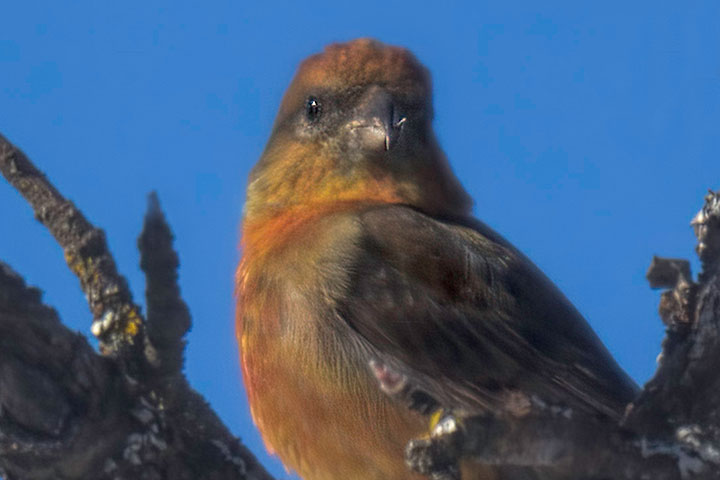
By way of contrast, this female is beige.
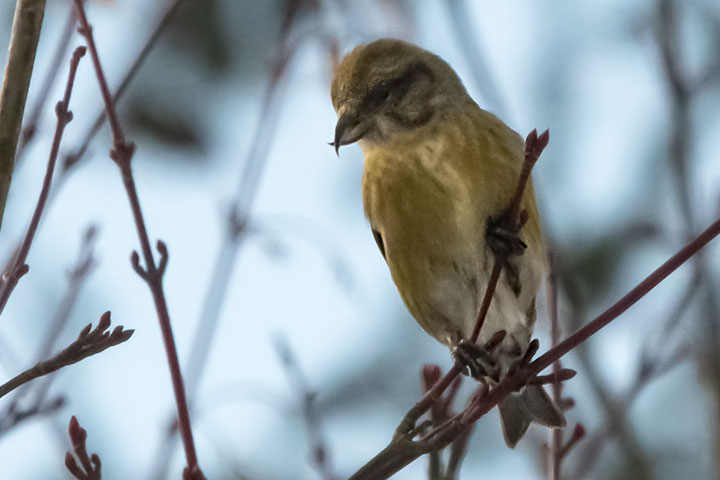
While the species is named for the brick red of some of the males, there are many males that are distinctly orange.
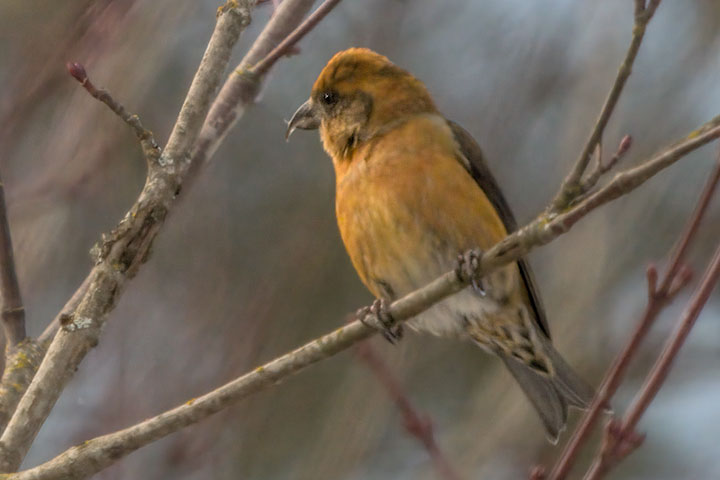
And then there are the first-year males that are a striking yellow.
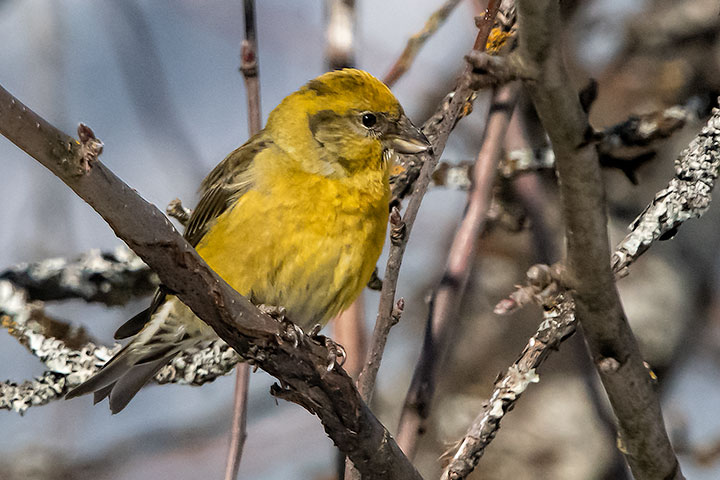
While the previous Red Crossbills were seen in trees alongside roads, they were merely using them as staging posts to enable them to feast on road salt. This is a female crossbill. Salt is ejected from ice as it freezes and so forms a thin saline solution on the ice surface. Consequently, the crossbill merely has to lick the surface to get the salt.
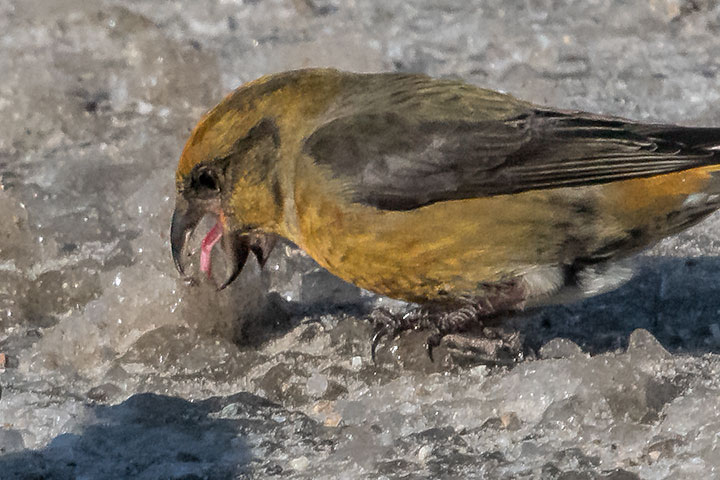
Crossbills were not the only finches seen foraging on road salt. Here are three pine siskins and two goldfinches.
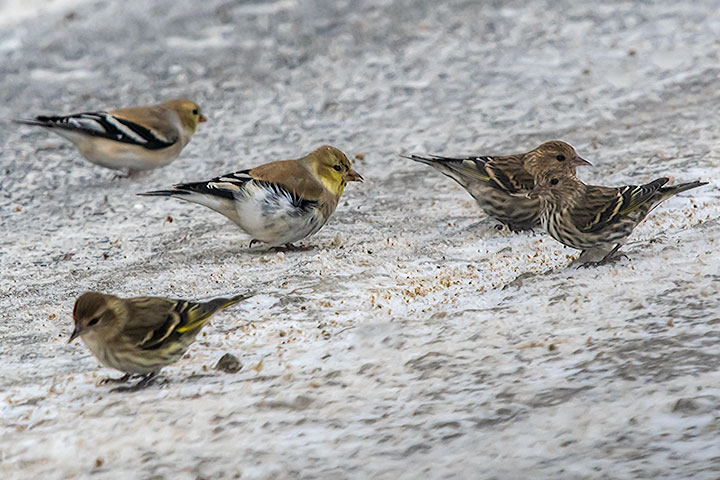

The Crossbill “merely has to lick the surface.” Are you kidding me? I licked the crossbar of a hockey net at an outdoor rink. Once. [We are expecting a bevy of WHITE Crossbill offerings with commentary from you soon.]
Doug, no I am not kidding you — look at the picture.
Yet, you raise an interesting point. A human tongue will freeze against a cold object when it is licked because the tongue is wet. However, most birds have dry tongues, so placing them against ice wouldn’t present a problem.
Thank you for investigating this, Alistair. Thanks for all your hard work!
Beautiful colours they are!! Lovely photos.
I’m pretty sure I heard a Varied Thrush singing this morning, so maybe spring is just around the corner!
Also saw what I think was a double crested cormorant at Balfour yesterday.
Lovely to see your live crossbill specimens with all their colour variety. While at Nakusp Hot Springs a couple weeks ago, I picked up one which had too earlier flown into a window so was long gone, which is in my freezer now. I was fascinated by the few mustard gold colour feathers in its breast among the crimson ones. There were so many chattery flocks of them in the forest those days, and I’ve been hearing them among the siskin flocks on Arena Avenue lately too.
Wonderful photos and useful commentary. Helen, I’m sure I saw, didn’t hear though, a Varied Thrush on the Nurse’s Trail in Kimberley this past week.
As well beautiful and much appreciated photos along with enlightening explanations. What a complete joy to hear the varied thrush 3 mornings ago and then a visit to my feeder just to make sure its presence was fully known : ) Lots of chirping chorus high up which I am guessing are pine siskin and a large group of robins at the Wardner trail head which does suggest an early spring.